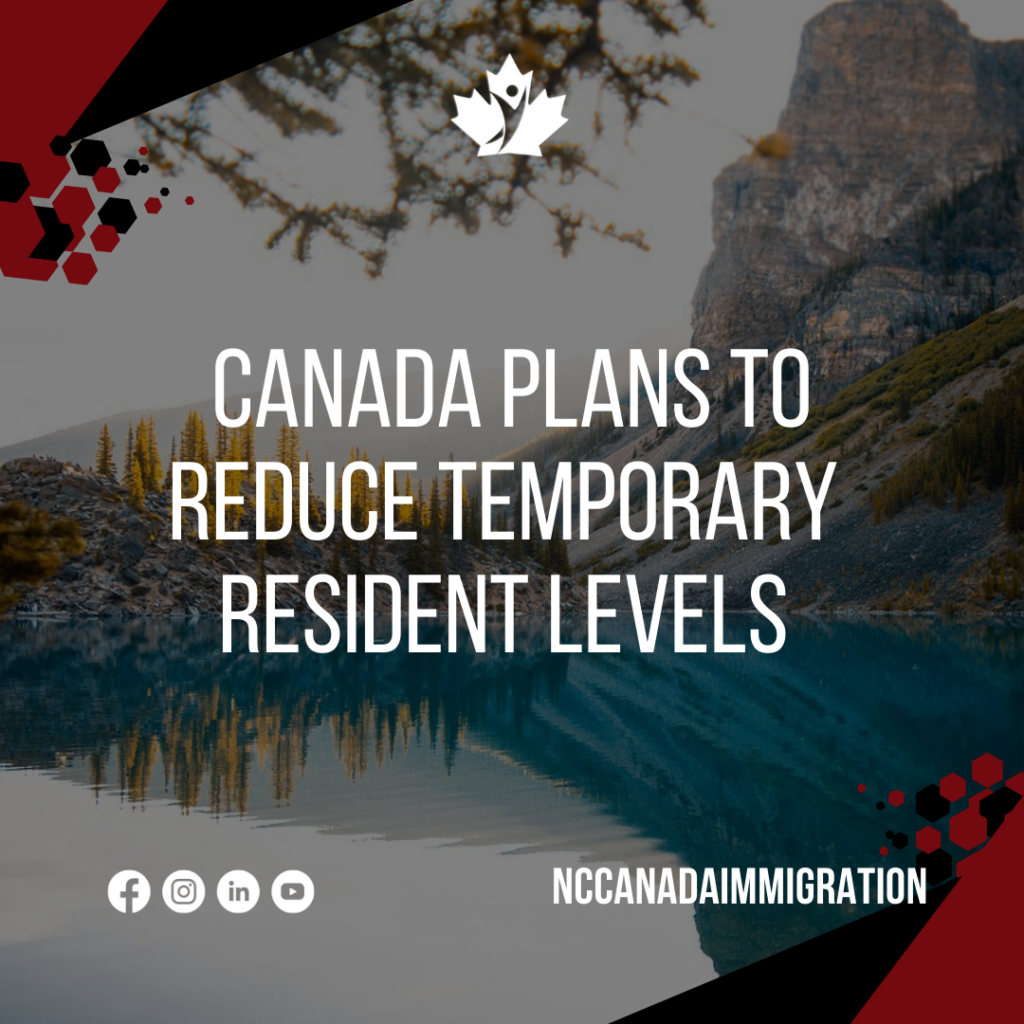Canada, renowned for its welcoming stance on immigration, is facing an unprecedented housing shortage and economic strains exacerbated by rapid population growth. The government’s recent policy of reducing temporary resident arrivals shifts aims to address these challenges while ensuring sustainable growth and social cohesion.
Recently, Canada’s Immigration Minister, Marc Miller, announced a strategic plan to reduce the influx of temporary residents over the next three years. This decision reflects a proactive approach to managing population growth and mitigating housing and other essential services pressures.
As of 2023, Canada was home to 2.5 million temporary residents; nearly doubling in just two years. These temporary residents now make up 6.2 percent of the country’s population. The government aims to decrease the proportion of temporary residents from the current 6.2% to 5% of the total population by 2027. The decision follows Immigration, Refugees and Citizenship Canada’s (IRCC) announcement in January of capping new study permit applications for international.
Impact on Housing and Services
The rapid influx of temporary residents, including international students, asylum seekers, and temporary foreign workers, has strained Canada’s infrastructure and contributed to housing shortages. Rising rents and concerns about access to healthcare have underscored the need for policy interventions to alleviate these pressures.
By scaling back on temporary resident arrivals, the government seeks to ease the burden on housing markets and ensure adequate access to essential services. This strategic shift aims to balance population growth and infrastructure development, fostering sustainable urban development and enhancing livability for all Canadians.
Changes to Temporary Foreign Worker Programs
Canada’s Temporary Foreign Worker (TFW) Program is set to undergo significant changes starting May 1, 2024. These adjustments aim to balance meeting labour market needs and prioritize opportunities for Canadian workers.
Sectoral Workforce Limit
Currently set at 30%, the maximum proportion of temporary foreign workers allowed in a business’s workforce will decrease to 20% for most sectors. Exceptions apply to the construction and healthcare sectors, maintaining the 30% threshold temporarily.
Local Options Exploration
Employers must exhaust local hiring options before applying for a Labour Market Impact Assessment (LMIA). This includes considering asylum seekers with valid work permits for available positions before seeking LMIAs for temporary foreign workers.
In 2023, India was among the leading source countries for Canada’s TFW Program. Approximately 26,500 permits were granted to Indian nationals, ranking second only to Mexicans, who received 45,500 permits. The Philippines followed closely, with nearly 20,600 temporary resident permits allotted to its nationals under the same program.
Reduced LMIA Validity
The validity period for LMIA approvals will shrink from 12 months to six months. This urges employers to promptly fill approved positions with temporary foreign workers.
Reducing the percentage of temporary foreign workers aims to prioritize job opportunities for Canadians while addressing critical labour shortages in sectors like construction and healthcare. Requiring employers to explore local options before seeking LMIA approval promotes fairness in hiring and supports the integration of asylum seekers into the workforce. Shortening the LMIA validity period encourages swift hiring of approved temporary foreign workers, addressing labour market needs efficiently.
Economic Implications
While immigration has historically driven Canada’s economic growth, the recent surge in temporary residents has prompted concerns about its long-term sustainability. However, key economic indicators such as per-capita GDP, unemployment rates, inflation, and interest rates are likely to remain stable.
The policy shift may offer an opportunity for supply to catch up with demand in sectors like housing, alleviating strains on affordability levels and fostering long-term economic stability.
British Columbia and Ontario have incorporated measures in their latest fiscal plans to anticipate a potential decline in temporary residents. This is aimed at buffering against any resulting decrease in tax revenues and mitigating the impact on the economy. Predictions suggest that a decrease in temporary residents could lead to a 0.8 to 1.9 percentage point reduction in economic growth in these provinces next year.
Concluding Remark
While the reduction in temporary resident arrivals may lead to a slight slowdown in economic growth, particularly in sectors reliant on foreign labour, the long-term benefits of a more sustainable demographic profile are significant. By addressing housing shortages and infrastructure strains, the government lays the groundwork for future economic resilience and social cohesion.
However, challenges remain, including adapting to an aging population and ensuring inclusive and equitable economic growth. Provinces must collaborate with the federal government to develop innovative solutions that promote job creation, infrastructure development, and social welfare while managing the transition to a more sustainable demographic landscape.
Reach out to Northern Connections for Canadian Immigration for immigration assistance.
With policy shifts altering, the acceptance of slow growth, and caps on study visas, the path to achieving the Canadian dream has never been more challenging. Our seasoned consultants possess the expertise needed to increase your chances of fulfilling the Canadian dream, providing comprehensive guidance and support the navigate in these changes.
The Team at Northern Connections Canada



